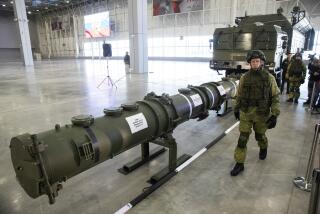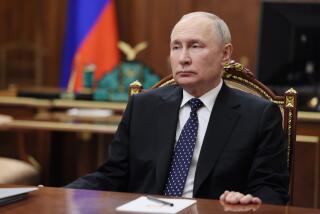Panel Today Will Urge Senate OK of INF Treaty
WASHINGTON — The Senate Foreign Relations Committee today will formally urge approval of a treaty eliminating U.S. and Soviet medium-range missiles, calling the pact “a triumph of solidarity” for NATO and warning that its rejection could cripple the U.S.-European military alliance.
In a report issued Sunday that summarized 21 days of hearings, the panel dismissed objections of conservative lawmakers and military experts to the Intermediate-range Nuclear Forces Treaty. The critics’ most serious concern, that U.S. spy satellites could not easily detect significant Soviet violations of the agreement, “probably” is unfounded, the report concluded.
The report also rejected warnings by some hawkish critics, led by Gen. Bernard W. Rogers, former supreme commander of the North Atlantic Treaty Organization, that the INF agreement will roll back the U.S. nuclear shield now protecting Europe.
“To suggest that the elimination of 859 U.S. missiles in exchange for the elimination of 1,752 Soviet missiles represents a weakening of the American commitment is to misunderstand the entire basis of that commitment,” the report said.
The report called the treaty, which abolishes about 3% of the superpowers’ nuclear arsenals, “admittedly a modest success in military terms.”
Sen. Claiborne Pell (D-R.I.), chairman of the Foreign Relations Committee, termed it “a good treaty that responds to a major political concern within NATO.”
President Reagan and Soviet leader Mikhail S. Gorbachev are expected to discuss reducing the number of long-range nuclear missiles at their summit in Moscow next month. The two leaders agreed to the INF treaty at the Washington summit meeting last December.
The Foreign Relations Committee voted 17 to 2 last month to recommend that the Senate approve the INF agreement. The Senate now must approve the pact by at least a 2-to-1 margin before it becomes binding.
The treaty would dismantle 2,554 U.S. and Soviet missiles with ranges of about 300 to 3,500 miles within three years.
More to Read
Sign up for Essential California
The most important California stories and recommendations in your inbox every morning.
You may occasionally receive promotional content from the Los Angeles Times.










